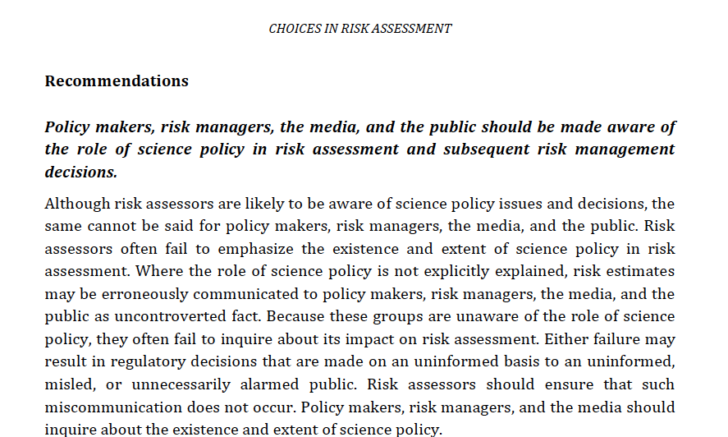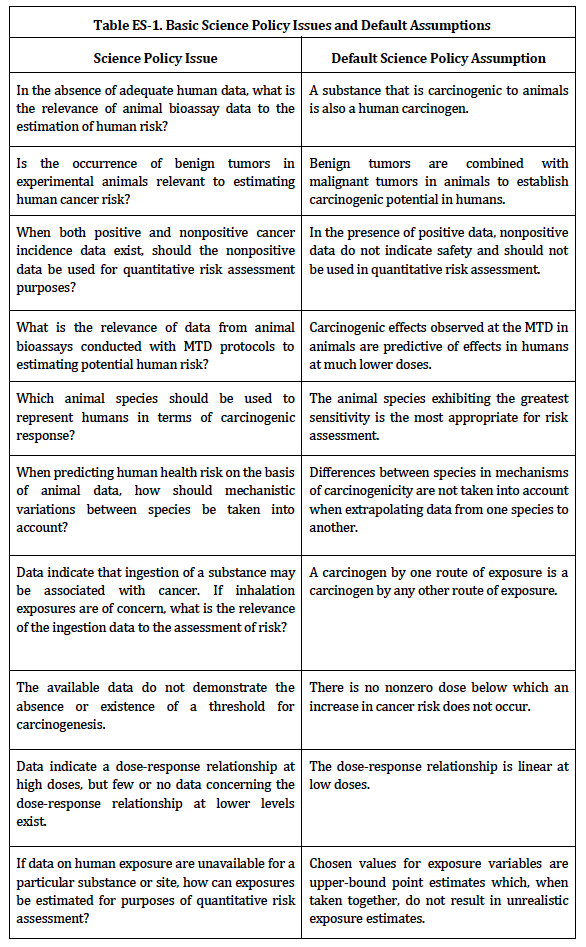Now finally available in PDF format, here is my 1994 report on science policy that the Clinton Administration tried to suppress. You can use it to comment on the just proposed EPA science transparency rule.

The EPA’s science transparency proposal calls for disclosure of science policy/default assumptions.


I called for this disclosure/discussion in 1994 in “Choices in Risk Assessment.” It is the report’s first recommendation.

What is science policy? From “Choices in Risk Assessment“, below are 10 common science policy issues and default assumptions used in EPA risk assessment.

Click here for a PDF of “Choices in Risk Assessment.”
Below is the story of the Clinton administration’s attempted suppression of “Choices in Risk Assessment.
###
Following the end of the Cold War, the Department of Energy (DOE) faced clean-up costs for its nuclear weapons sites amounting to hundreds of billions of dollars. The high costs would largely have been incurred because of EPA standards that essentially would have required the former weapons sites be returned to “Garden of Eden” status.
At the time, the DOE took the EPA standards so seriously that it was actually developing essentially a giant vacuum cleaner to suck-up the top layer of sand at the Nevada Test Site (approximately 5,400 square miles in size), decontaminate it and replace the sand.
Overwhelmed by the magnitude of the clean-ups, the Bush administration DOE commissioned Milloy in 1992 to lead an investigation into whether EPA clean-up standards were based on science or politics. Milloy’s team of science and policy experts (called the Regulatory Information Analysis Project) compiled a report titled, “Choices in Risk Assessment: The Role of Science Policy in the Environmental Risk Management Process.”
Completed in the fall of 1994, the report concluded that environmental policy was largely based on politics, not science. But when the report was completed and circulated for review within the Clinton administration-run DOE, the report was flagged as politically incorrect and Milloy was ordered by Clinton appointee Carol Henry (a former EPA staffer) to keep the report secret.
Sacrificing his business relationship with the Clinton DOE, Milloy disobeyed the order and released the report, which was subsequently featured in a Wall Street Journal editorial.
The attention that “Choices in Risk Assessment” garnered coincided with the Republican takeover of 104th Congress and congressional focus on regulatory reform, vaulting Milloy into the regulatory reform debate about to take place on Capitol Hill. Milloy testified before the U.S. Senate about risk assessment in the context of DOE clean-up on March 6, 1995. The DOE never wound up spending hundreds of billions of dollars to clean up its weapons sites. No word on what ever happened to the giant NTS vacuum cleaner.